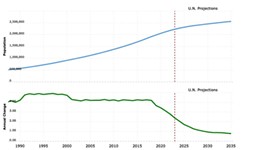Council Eyes Neighborhood Plan Changes -- Again, and Again, and Again
By Mike Clark-Madison, Fri., May 23, 2003
Most of those plans spawned a long list of zoning changes, but not every future rezoning will require a plan amendment. Each plan's "future land-use map" outlines broad categories of acceptable use -- single-family, multifamily, commercial, and so on -- in locations within the NP area, and an amendment would only be required to change the map. The plans also include Smart Growth infill provisions like small-lot homes or garage apartments. (Other NP provisions, dealing with transportation, urban design, and such, aren't really at issue now before the council.)
Back in the day, some NP advocates envisioned a future where plans would be inviolate for their five-year life span; developers who wanted to build drive-through plasma centers where the plan called for garden homes would simply be out of luck, and neighbors would not have to wage war before the Planning Commission and City Council. The amendment process crafted by city Neighborhood Planning and Zoning staff, with input from NP teams, other stakeholders, and now the council, certainly does not contemplate that ideal. As it stands, a plan cannot be amended for a year after passage, and thereafter amendments will be accepted for review by NPZD once a year, depending on the neighborhood -- some in February, others in July.
Even before the proposal went to the council, NPZD had responded to great and small howls from stakeholders -- ranging from the Real Estate Council of Austin to the city's own Neighborhood Housing department -- and created exemptions to these rules for projects that offered various kinds of community benefits. Many NP team leaders have opposed any exemptions, arguing that the plans themselves respond to Austin's needs for affordable housing or job creation or whatever. (This reporter chaired the Central East Austin NP team, but -- aside from impatience over the length of the NP-amendment saga -- I'm neutral on the process currently proposed.)
As adopted in March, the NP-amendment ordinance, largely at the behest of Mayor Pro Tem Jackie Goodman, granted NP teams the power to initiate changes without waiting a year, required their support (or that of three council members) for other exemptions, and required a supermajority (six votes) to approve an amendment opposed by the NP team. The idea of neighborhood planning, Goodman said from the dais, was to reduce "the number of politically and emotionally charged controversies that came before [us] on zoning cases. Neighborhood plans take a lot of people [and] great amounts of time. They shouldn't be easy to amend."
But the ink on the March ordinance was not yet dry before Dunkerley sought to tweak it to help developers building stuff the city wants -- particularly affordable housing with public-financing or economic-development projects. "On these kind of projects, the timing is really critical," Dunkerley told her colleagues. "You really need to have some way to get into an expedited process in order to bring jobs and increase the tax base."
Dunkerley and Goodman have alternately cooperated and argued on the dais on their respective positions, with Dunkerley thus far the winner. The revisions passed by the council last week rolled back some of Goodman's neighbor-friendly provisions, and she and Raul Alvarez voted against them -- as did Daryl Slusher, who has publicly grown more disenchanted with neighborhood planning, and who thinks the current NP-amendment ordinance still delegates too much of the council's power to unelected neighborhood groups. At Slusher's request, stronger conflict-of-interest provisions for NP team members will be voted on this week. (Slusher and Alvarez also had concerns about the exemption for projects offering "environmental protection," fearing this would be a back door for aquifer-paving developers.)
As Dunkerley has taken pains to point out, none of these exemptions are designed to make it easier for projects to get approved, simply to be considered. But all of this back-and-forth must reinforce the sense, already common among some citizens, that neighborhood plans are a huge obstacle and will routinely need amendment to further the city's goals. This despite the fact that NPs have already increased, substantially, the amount of land available for high-density and commercial projects in the urban core. "If I were out there," says one City Hall insider, "I would be building projects that are already approved in the neighborhood plans and making a killing. The developers don't know how good they've got it."
Got something to say on the subject? Send a letter to the editor.








